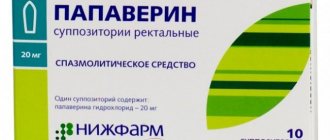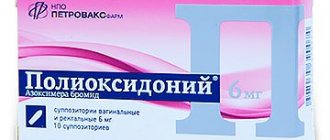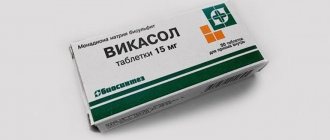Quite often, doctors use special medications to stop bleeding, which effectively and most importantly quickly cope with the task. These drugs include Tranexam in the form of an injection solution (injections) and tablets - this is a drug with local and general hemostatic effects. How effective is it for heavy bleeding? Can the medication be used during pregnancy? Let's figure it out.
Tranexam is used for almost all types of bleeding, as well as as a prophylaxis before and during surgical operations.
Features of the action
With some diseases and pathologies, women may experience uterine bleeding, which is sometimes confused with menstruation. A sign of bleeding is the release of a large volume of blood from the uterus (more than 85 mg per day). In this case, the woman has to change the pad every hour or two. The main signs of bleeding are cramping pain in the abdomen, the presence of a large number of clots in the blood, as well as fatigue and weakness that occurs against the background of the development of anemia.
The drug Tranexam in the form of tablets and injections affects blood clotting, slowing down and completely stopping the activity of the fibrinolysis enzyme (its high content provokes heavy bleeding). In addition, the transformation of plasminogen, a component of plasma, stops. In this case, a hemostatic effect is manifested, which is necessary to stop bleeding.
Tranexam tablets and injections have the following pharmacological effects on the body:
- Hemostatic;
- Anti-infective;
- Antitumor;
- Anti-inflammatory;
- Antiallergic;
- Painkiller.
If you take Tranexam tablets orally, up to 50% of the substance is absorbed. In this case, the maximum concentration of the main component is observed after approximately three hours. Tranexamic acid binds to proteins and can cross the placenta. It is also excreted into breast milk (concentration 1%). The effect of the drug lasts for 17 hours (in tissues), but in plasma no more than 8 hours. When using the drug intravenously, an analgesic effect is achieved.
Important! The active substance can accumulate in the body if there are kidney problems.
How quickly does it stop bleeding?
When taking the drug orally, no more than 50% of the dose taken enters the systemic circulation, and the maximum concentration of the active component in the plasma is achieved within 3 hours. The effectiveness and speed of action of the drug depends on the cause of hemorrhage, the individual characteristics of the body and a number of other factors. Tranexam is considered one of the best hemostatic agents, but you should not expect an immediate effect. Thanks to its action, bleeding stops gradually, on average it takes from 3 to 7 days. The process may take a long time.
Important information: Why does a man have blood clots in his urine at the end of urination and what to do if there is bleeding without pain from the urethra (urethra)
Medicine does not always help. It may not give the desired result at all or may slightly reduce blood loss rather than stop it completely. However, you should not increase the dosage without permission or extend the treatment course.
Description of the drug, composition and release form
Tranexam can be purchased as tablets or a solution for intravenous administration. The tablets have a convex shape, white color and a water-soluble film on the surface. The solution is a colorless or slightly brownish transparent liquid. The tablet contains the active substance tranexamic acid (250 or 500 mg), as well as auxiliary components: cellulose, hyprolose, silicon dioxide, talc, calcium stearate, sodium carboxymethyl starch, macrogol, titanium dioxide, hypromellose. The drug is packaged in contour cells of 10 units. A cardboard package can contain from one to five blisters.
ATX code : B02AA02 (Tranexamic acid) (for tablets and injections).
Tranexam® tablets, film-coated
white, round, biconvex; On a cross section, the kernel is white or white with a creamy or grayish tint.
| The main active ingredient in the composition: | In 1 tablet |
| tranexamic acid | 250 mg. |
Excipients in one tablet
: microcrystalline cellulose, hyprolose, sodium carboxymethyl starch, talc, colloidal silicon dioxide, calcium stearate.
Tablet shell composition:
hypromellose, titanium dioxide, talc, macrogol.
10 pieces each - contour cell packaging (1, 2, 3 or 5 pieces) - cardboard packs.
The main active substance in Tranexam tablets is tranexamic acid, which, due to its specific effect on the elements of the blood coagulation system, increases its viscosity and, making it thicker, complicates further flow from the vessels.
Tranexam® tablets, film-coated
white, oblong, biconvex; On a cross section, the kernel is white or white with a creamy or grayish tint.
| The main active ingredient in the composition: | In 1 tablet |
| tranexamic acid | 500 mg. |
Excipients in one tablet
: microcrystalline cellulose, hyprolose, sodium carboxymethyl starch, talc, colloidal silicon dioxide, calcium stearate.
Tablet shell composition:
hypromellose, titanium dioxide, talc, macrogol.
10 pieces each - contour cell packaging (1, 2, 3 or 5 pieces) - cardboard packs.
Clinical and pharmacological group of the drug (for tablets and injections) : Hemostatic drug. Fibrinolysis inhibitor – inhibitor of the transition of plasminogen to plasmin.
Pharmacotherapeutic group of the drug (for tablets and injections) : Hemostatic agent.
The composition of the solution (1 liter) is as follows: active substance (50 g), distilled water. Packaged in ampoules of 5 pieces in contour cells. The package contains one or two cells.
Tranexam® solution for intravenous administration
in the form of a clear, colorless liquid.
| The main active ingredient in the composition: | In 1 ml. |
| tranexamic acid | 50 mg. |
Excipients in the solution
: water for d/i – up to 1 ml.
Tranexam® solution for intravenous administration
transparent, colorless.
| The main active ingredient in the composition: | In 1 ml. |
| tranexamic acid | 100 mg. |
Excipients in the solution
: water for d/i – up to 1 ml.
5 ml each - neutral glass ampoules (5 pieces) - contour cell packaging (1 or 2 pieces) - cardboard packs.
5 ml each - neutral glass ampoules (5 pieces) - contour cell packaging (20, 50 or 100 pieces) - cardboard boxes (for hospitals).
5 ml each - neutral glass ampoules (5 pieces) - contour cell packaging (20, 50 or 100 pieces) - cardboard boxes (for hospitals).
10 ml - clear glass bottles (1 piece) - cardboard packs.
10 ml - colorless glass bottles (10 or 20 pieces) - cardboard boxes (for hospitals).
Tranexam® solution for intravenous administration
transparent or almost transparent, colorless or with a light brown tint.
| The main active ingredient in the composition: | In 1 ml. | In 1 ampoule |
| tranexamic acid | 50 mg. | 250 mg. |
Excipients in the solution
: water d/i.
5 ml each - glass ampoules (5 pieces) - contour cell packaging (1 or 2 pieces) - cardboard packs.
Indications for use
The use of Tranexam injections (and tablets) is recommended for the following diseases and conditions:
- Hemorrhages during pregnancy;
- Angioedema (hereditary);
- Inflammatory diseases (tonsillitis, laryngitis, pharyngitis, stomatitis, damage to the oral mucosa);
- Allergic dermatitis, eczema, urticaria, toxic or drug rash.
The injection solution is most often used during surgical interventions to eliminate reactions such as peritonitis, sepsis, pancreatic necrosis, gestosis and other severe conditions.
Tranexam is prescribed during the treatment and prevention of various disorders of the circulatory system (postpartum hemorrhage, liver disease, leukemia, malignant tumors of the prostate, pancreas, as well as gastrointestinal and uterine bleeding, tooth extraction due to hemorrhagic diathesis).
Quite often, doctors recommend taking Tranexam capsules (tablets) during periods that are very heavy. This will help reduce blood loss and the likelihood of developing anemia.
In this video: Heavy periods. Normal or pathological? Uterine bleeding.
How does the drug affect the body?
Tranexam is a relatively new drug on the pharmacological market, but has already established itself as an effective medicine. It is only important to understand in what cases it has indications for use during menstruation.
Prolonged severe bleeding occurs due to high levels of fibrinolysin in the blood. This can occur if platelets do not produce enough plasmin (the component responsible for blood clotting). After penetration into the body, Tranexam helps fibrinolysin convert into plasmin. And as a result, bleeding becomes weaker.
Tranexam has an effect on the reproductive system as a whole, and not just on reducing the volume of menstruation. The drug has anti-inflammatory, antihistamine and antibacterial effects, reduces pain, and blocks the growth of neoplasms (cysts and tumors). Tranexam accelerates the blood clotting process. Therefore, its use is indicated for hemophilia, for the treatment of diseases of the gastrointestinal tract. In rare cases, Tranexam is used by pregnant women if they have brown discharge.
The drug is used during surgical interventions, as well as after them as a prophylaxis.
Another well-known range of its use is nosebleeds associated with cancer.
Reviews after treatment with Tranexam are overwhelmingly positive. The effectiveness of this drug is higher than the more well-known ones - Dicinone and Vikasol. And there is no comparison with tincture of water pepper, nettle decoction or any other traditional medicine.
For some women, menstruation occurs easily, causing minimal discomfort, but there are also girls who are less fortunate. It is not uncommon for the discharge to be so heavy during menstruation that you have to change the sanitary product every 2-3 hours. In such cases, you have to look for a remedy to stop the bleeding.
The most common causes of heavy menstrual bleeding are:
- hormonal imbalance;
- age (either adolescence with unstable hormonal levels, or menopause);
- use of drugs containing hormones;
- myoma;
- endometrial or cervical polyps;
- lupus;
- genitourinary system infections;
- malignant tumors;
- intrauterine contraceptives (IUD);
- low blood clotting.
Tranexam is prescribed during menstruation in order to regulate the cycle. If there is already heavy menstrual bleeding, the drug reduces it by thickening the blood.
In parallel with stabilizing blood loss during critical days, Tranexam helps:
- Reduce pain in the lower abdomen during menstruation.
- Maintain good health.
- Reduce the inflammatory process, if any.
But in no case should you self-medicate, otherwise you will have to treat the consequences later.
Contraindications for use
There are a number of conditions and pathologies in which the use of the drug in both forms of release (injections and tablets) should be abandoned; use is contraindicated in:
- Individual sensitivity to individual components of the drug;
- Thrombosis (thrombophlebitis, myocardial infarction, cerebral blood clots);
- Kidney failure;
- Increased content of red blood cells in the urine;
- Subarachnoid hemorrhage;
- Thrombohemorrhagic complications;
- Problems with color perception;
- Fibrinolysis;
- history of seizures;
- Children under 3 years of age, for tablets;
- Spontaneous effusions of blood between the meninges, due to a head injury or rupture of an aneurysm.
Side effects from pills and injections
Tranexam® tablets , instructions for which are always included in the package, can lead to the following side effects:
- Heartburn;
- Nausea;
- Vomit;
- Diarrhea;
- Dizziness;
- Skin rash;
- Itching;
- Decreased appetite;
- Drowsiness;
- Impaired color perception;
- Increased thrombus formation.
Tranexam® solution for injections , which is used for uterine bleeding both intravenously and intramuscularly, can cause the following adverse reactions of the body:
- Allergies (rash, itching, urticaria);
- Anorexia, diarrhea;
- Tachycardia;
- Hypotension;
- Dizziness;
- Chest pain.
How to take tablets and injection solution?
How much should I take, and in what form? Instructions for use of Tranexam tablets and solution contain information on how to take the drug during menstruation and bleeding. It is necessary to adhere to all recommendations of the doctor who prescribes treatment based on the complexity of the problem.
Reception and dosage of Tranexam tablets can be carried out as follows, for various diseases and situations:
- For local fibrinolysis, you need to take 1.5 g of the drug two or three times a day.
- For profuse uterine bleeding, Tranexam tablets are prescribed in an amount of 1-1.5 g 4 times a day. Treatment lasts about 4 days.
- Bleeding during pregnancy - 250-500 mg 3-4 times a day, until bleeding stops completely. The average duration of a course of therapeutic treatment with tablets is 7 days.
- Bleeding from the nose - for a week, one gram of the product in the morning, lunch and evening.
- Angioedema - no more than 4.5 g per day. In this case, the patient takes the medicine either on an ongoing basis or at intervals, depending on the complexity of the pathology.
- For menorrhagia , the recommended dose is 1000 mg 3 times a day until menorrhagia stops, but not more than 4 days in a row. In case of profuse bleeding, the dose of tablets can be increased, but the total daily dose should not exceed 4000 mg.
- Allergies and inflammation - for 3-10 days you need to drink 1.5 g of tablet medication, two to three times a day.
- After surgery , for example, conization of the cervix, doctors prescribe treatment with the drug for two weeks. It is necessary to take 4.5 g of the product per day.
- After the operation of conization of the cervix - 1500 mg of Tranexam® tablets, 3 times a day, for 12 days after the operation.
- For traumatic hyphema - 1000-1500 mg of Tranexam® tablets, 3 times a day (target dose 25 mg/kg body weight) for 7 days.
- Patients with hemophilia - the drug is prescribed orally at a dose of 25 mg/kg body weight 2 hours before tooth extraction, and then 1000-1500 mg 3 times a day for 6-8 days.
During treatment with Tranexam, you should adhere to all doctor’s recommendations regarding dosage and medication administration.
Tranexam in ampoules is prescribed for the following conditions and diseases:
- Fibrinolysis - Tranexam solution is injected into a vein two to three times a day, 250-500 mg.
- Bladder surgery - during surgery, 1 gram of solution is administered, and then the same amount every 8 hours. The duration of treatment is three days. Further therapy is based on taking pills.
- Before surgery, you can also administer the drug in an amount of 10 mg per kg of weight 30 minutes before surgery. This will prevent high blood loss.
If the patient has problems with the excretory function of the kidneys, then Tranexam for uterine bleeding is prescribed taking into account the adjustment of the dose of the solution: from 5 to 10 mg/kg per day.
Important! Prescription and dosage can only be recommended by the attending physician.
Undesirable effects of taking tranexamic acid
The use of the drug is possible after reading the instructions and eliminating contraindications for use. They are as follows:
- Allergic reactions to Tranexam in the past.
- Acute thrombosis or its high risk (especially after a heart attack, stroke, thrombophlebitis of the veins of the lower extremities).
- When color vision changes.
- If kidney function is impaired.
Even for those who are prescribed the medication, side effects are possible:
- Nausea and vomiting, loss of appetite, heartburn.
- Dizziness, desire to constantly sleep, unmotivated weakness.
- Formation of blood clots in any vessels.
- Manifestations of allergies from urticaria to anaphylactic shock.
There is no reliable data on overdose of the drug. However, Tranexam cannot be combined with the following medications:
- antibiotics of the penicillin and tetracycline series;
- sedatives - Diazepam;
- Dipyridamole;
- list of medications for high blood pressure.
We recommend reading about the causes of bleeding when taking birth control pills. From the article you will learn about the types of discharge and their characteristics at the beginning of taking OCs and at the end of the package, the causes of heavy bleeding, and indications for seeing a doctor.
And here is more information about how to distinguish uterine bleeding from menstruation.
Tranexam is an effective hemostatic agent. Effectively eliminates bleeding from the uterine cavity, cervix, vagina of any nature. You should not try to use the medicine to delay or completely stop normal periods, as this may cause complications and consequences in the future.
Special instructions and use in pregnant women
Quite often, Tranexam is prescribed during early pregnancy. The drug helps eliminate the threat of miscarriage. But such a prescription should be monitored by a doctor to eliminate risks to the health of the mother and baby. Before taking Tranexam in the early stages, you should undergo a series of examinations to exclude the presence of conditions for which the use of tranexamic acid is prohibited, for example, thrombosis.
During breastfeeding, it is better to avoid taking the medicine, since its content in milk is quite high. Doctors prescribe the drug only if there is a real risk to the mother's health. During the treatment period, you will have to stop feeding the baby. Tranexamic acid crosses the placental barrier and enters breast milk.
During pregnancy, if there is a threat of miscarriage, the gynecologist may prescribe Tranexam to stop bleeding and spotting.
Before you start taking Tranexam for heavy menstrual or uterine blood loss, you need to undergo an examination by an ophthalmologist to understand the condition of the fundus of the eye, how sharp your vision is and whether there are any disturbances in color perception.
Drug overdose
Data are very limited on cases of overdose.
Symptoms of possible overdose: dizziness, headache, nausea, vomiting, diarrhea, dizziness, orthostatic hypotension. Predisposed people have an increased risk of thrombosis.
Treatment of accidental overdose: no antidote yet known. If an overdose of tranexamic acid is suspected, hospitalization is necessary. When providing assistance, you should induce vomiting, then perform gastric lavage and take activated charcoal during the first 1-2 hours after an overdose.
Analogues of Tranexam®
There are drugs that are similar to the drug Tranexam (tablets of 250 and 500 mg) in terms of the active substance. These include the following means:
- Transamcha;
- Tranexamic acid;
- Troxaminate;
- Exacyl.
If the doctor prescribes Tranexam for menstruation, but the pharmacy does not have this medicine, then you can buy drugs similar in pharmacological group:
- Ambien;
- Aprotex;
- Aminocaproic acid;
- Gordoks;
- Pamba;
- Polycapran;
- Traxylene;
- Trenax;
- Tugina;
- Trascolan;
- Goombix;
- Ingitril;
- Contrikal;
- Aprotinin.
What is included in the drug Tranexam for bleeding during menstruation
Tranexamic acid is the main active ingredient. It improves blood clotting and helps normalize the condition during heavy or normal menstruation, accompanied by pain.
A special drug stops heavy discharge, characteristic of the presence of an intrauterine device in the uterine cavity. It removes foci of inflammation, relaxes the muscle fibers of the genital organs, normalizes the functioning and development of the reproductive system in adolescence. You should not take these hemostatic tablets if you are prone to thrombosis, have renal failure, or have a heart attack.
Reviews about the use of the medicine
Regarding the effect of Tranexam injections and tablets, most people who have tried the product on themselves respond very positively. Despite the rather high cost, the medicine is very popular, as it quickly helps with heavy menstruation and other problems associated with disorders of the circulatory system. All patients insist that Tranexam can be taken during uterine bleeding only with the permission of the doctor and after laboratory tests that exclude contraindications. Only some reviews indicate the occurrence of adverse reactions from the body during treatment with this drug.
https://youtu.be/WZ1o8OYPsqY
Results
Tranexam is a relatively new drug, but it has already proven itself even better than some more well-known drugs. It is used to eliminate various types of bleeding, as well as for prophylaxis during and after operations.
If menstrual blood loss is more than 80 ml per day, and menstruation lasts more than 7 days, then the drug is indicated to reduce the amount of discharge during menstrual periods. Since it improves blood clotting, it thickens and flows more slowly. Menstruation after using Tranexam becomes regular and not so heavy.
But before use, be sure to consult a doctor and carefully read the instructions to avoid possible side effects.
Original article











